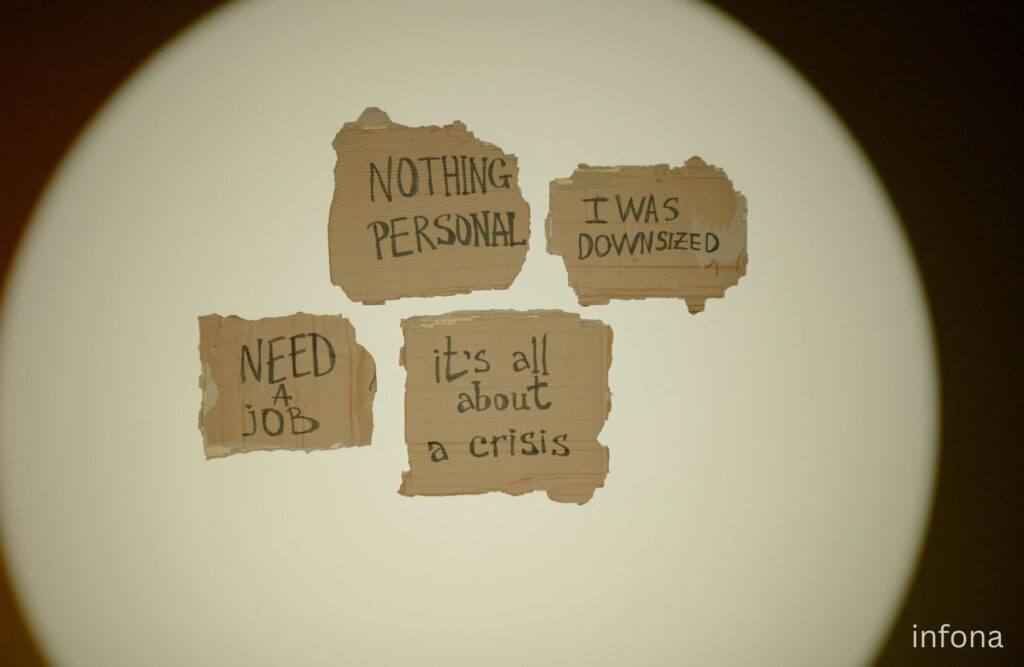How to Resign from a Job is a crucial step that one should think long and hard over before doing it. Whether the reason for your departure is finding another job, personal issues, or a new career path altogether, quitting as professionally and diplomatically as possible will help preserve your reputation as well as business relationships. Below is a guide to quitting your job in as professional a fashion as possible.

1. Know the Reasons for Leaving
Prior to making the move to resign from your job, you should know why you are leaving. Knowing your reasons can assist you in making a well-informed decision and present a good reason for How to Resign from a Job when you talk to your employer.
Some of the most common reasons individuals resign from employment are:
-
Career growth: You have been offered a better job elsewhere.
-
Personal issues: Health reasons, family commitment, or requirement for a quality work-life balance.
-
Work culture: Poor past experiences or workplace toxicity.
-
Dissatisfaction with work: No career development, interest, or sense of fulfillment in your current role.
Understanding your reasons for How to Resign from a Job will allow you to clearly communicate with your employer and conduct yourself professionally when quitting.
2. Plan Your Timing
Your resignation timing is key. If possible, do not resign during hectic times, when your team will be working on a big project or at sensitive business cycles. Timing your resignation right enables you to quit without interrupting proceedings or inconveniencing colleagues.
Some factors to keep in mind when staging your resignation include:
-
Provide sufficient notice: Most employment automatically has a minimum notice requirement, usually two weeks. Check your contract or policy to see what the required notice is. Where possible, attempt to give more notice, particularly if you have a senior or technical position.
-
Evaluate the work environment: If you are resigning due to personal issues or unhappiness with the work environment, attempt to ensure that the work environment will not deteriorate before you resign. Ensure your workloads are reasonable in the run-up to your resignation.
-
Think about your future: If you have not yet found a new position, then it is probably best to schedule your resignation based on your job hunt so that you know what is happening next.
3. Write a Professional Resignation Letter
A letter of resignation is a professional method of declaring your exit from an organization. If you are going to discuss your resignation with your employer in person, a written resignation is an appropriate professional means of recording your decision.
These are the most important elements of a letter of resignation:
-
Header: Place the date, your name, and the address of the recipient and his/her position.
-
Opening statement: Simply state that you’re resigning and provide your last day of work.
-
Reason for leaving: Keep the reason short and professional. If you’re leaving for personal reasons or a new opportunity, you can state it without elaborating too much.
-
Thank you: Thank the company for the opportunity and the experience you gained while working with the company.
-
Provide assistance: Provide to aid in the transition process, including training your replacement or completing current projects.
Sample of a resignation letter:
[Your Name]
[Your Address]
[City, State, Zip Code]
[Date]
[Recipient’s Name]
[Company Name]
[Company Address]
[City, State, Zip Code]
Dear [Recipient’s Name],
I am writing to officially resign as [Your Position] at [Company Name], effective [Last Working Day, usually two weeks from the date of the letter].
This was a difficult choice, but after giving it some deliberation, I have chosen to seek [brief reason, i.e., an alternative career prospect, personal aims, etc.]. I really appreciate the chance I had working at [Company Name] and value the experience, support, guidance, and professional development opportunities I enjoyed working here.
I am committed to making the transition as smooth as possible and am willing to assist in training my replacement or completing any pending work.
Thank you again for all your support.
Sincerely,
[Your Name]
4. Have a One-on-One Discussion with Your Manager
Although a How to Resign from a Job letter is necessary, a face-to-face discussion with your manager is a critical step in the resignation process. Here’s how to do it:
-
Request a meeting: Ask to meet your manager privately, allowing sufficient time to go through your resignation thoroughly.
-
Be respectful and professional: In the meeting, be honest but courteous. State the reasons for leaving in a cool, professional tone. If you are leaving for personal reasons, don’t complain or criticize the company.
-
Stay positive: Emphasize the good things about your experience with the company. Even if you are leaving because you were unhappy, do not complain. Being professional is essential to protect your reputation.
Example:
“I’ve enjoyed the learning and development opportunities here, but after a lot of thought, I’ve decided to accept another position that better meets my long-term objectives.”
5. Provide Support for the Transition
How to Resign from a Job, providing assistance to smoothen the transition is a professional gesture. Smoothing out the transition of responsibilities is essential in keeping things good between your employer and colleagues.
The following are some ways you can aid in the transition:
-
Transferring your responsibilities: If a replacement has already been recruited, provide training on your tasks.
-
Document your work: Provide precise documentation of your tasks and projects so that the person who is replacing you can continue your work easily.
-
Complete pending tasks: Ensure that all your current work gets done or is transferred suitably.
This reflects that you are concerned about the company and your peers even after you leave.
6. Prepare for the Exit Interview
Numerous firms provide exit interviews in an effort to solicit feedback about why you’re exiting and what can be done differently. Be prepared for the talk, but stay constructive. In case you are exiting based on dissatisfaction, maintain the tone to provide suggestions that may benefit improving the practices at the firm but refrain from too much negativity.
-
Be sincere but tactful: You are free to name things that could be enhanced, but no attacks or bitterness allowed.
-
Remain professional: Be respectful in your conversation, as exit interviews are usually forwarded to HR or higher management, which may affect your professional reputation.
7. Wrapping Up Loose Ends
As you depart, ensure that all administrative matters are cleared. These include:
-
Return company property: Return any company property like keys, equipment, ID badges, and credit cards.
-
Clear your desk: Remove your personal belongings and leave your space clean and tidy.
-
Manage benefits and compensation: Be aware of what you do with your health benefits, retirement funds, and vacation time. You will need to contact HR to tie up loose ends on these issues.
-
Notify contact information: Leave your contact details with HR in case they need to reach you after you’re gone.
8. Maintain a Professional Outlook Once You’ve Gone
Your resignation doesn’t stop when you leave the building for the final time. Being professional after you leave guarantees that your relationships stay positive and can work to your advantage in the future. Here are a few tips:
-
Stay in touch: If at all possible, stay in contact with your co-workers and boss. Networking is a useful resource for future possibilities.
-
Don’t burn bridges: You never know when you will run into someone from your previous company again, so it’s best to go out on good terms.
-
Respect confidentiality: Refrain from talking about sensitive company details or negative gossip after you leave.
9. Move Forward with Confidence
After you’ve resigned, it’s time to look to the next chapter in your career. Whether you’ve already found a new job or are waiting to see what’s out there, moving forward in confidence is important. Here are some tips:
-
Update your resume: Make sure your resume reflects your most recent achievements.
-
Lean on your network: Contact old colleagues, mentors, and industry contacts for guidance and leads.
-
Give yourself time to reflect: Utilize this transition period to consider what you wish to have in your next position and career path.
Conclusion
Resigning from a job is a personal and professional decision that requires careful thought and planning. By following the steps outlined in this guide—such as understanding your reasons for leaving, crafting a professional resignation letter, having a respectful conversation with your manager, and offering assistance during the transition—you can ensure that your resignation is handled with the utmost professionalism and respect.
Recall, the manner in which you exit a position can leave an indelible mark on your professional life. Resigning carefully and in a respectful way will ensure good relations and establish you for continued success in the next position.

